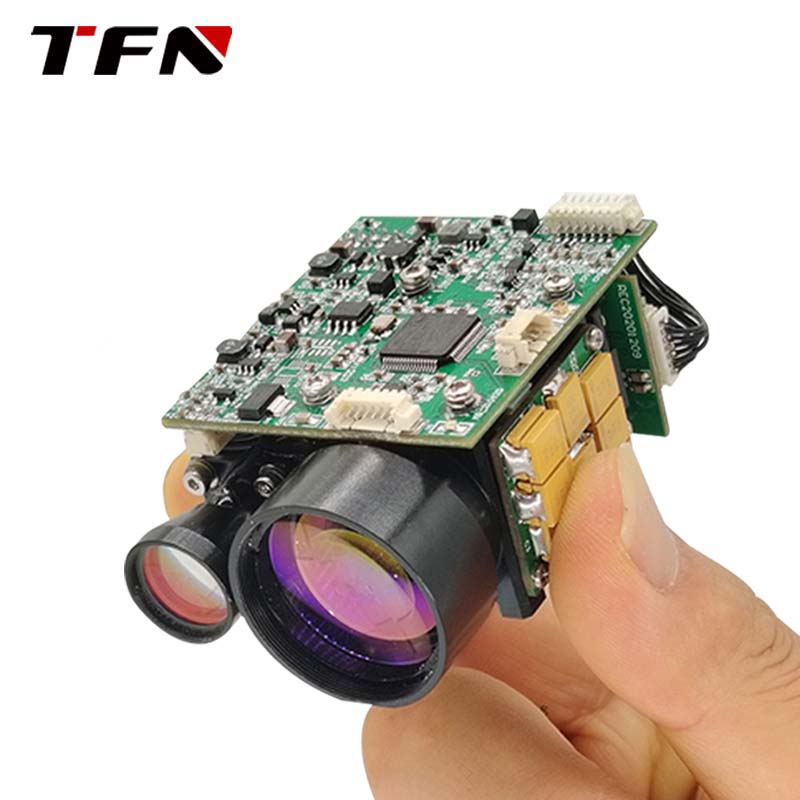Installation and use of ranging module
The ranging module is a device that uses physical principles such as sound waves and lasers to measure distance. It is mainly composed of sensors, control circuits and interface circuits. It determines the distance by transmitting signals and receiving reflected signals, and calculating the signal propagation time. It is widely used in industrial automation, security monitoring, smart home and other fields to provide technical support for intelligent control. The following will introduce the installation and use steps of the ranging module in detail to help users better understand and apply this technology.

1. Introduction to the ranging module
The ranging module mainly uses ultrasonic, infrared, laser or radar principles to measure distance. Ranging modules based on different principles have their own advantages and disadvantages, for example:
Ultrasonic ranging module: Using the reflection principle of ultrasonic waves, it has low cost and simple structure, but the measuring distance is limited and is greatly affected by environmental factors.
Infrared ranging module: It calculates the distance by emitting infrared light and receiving reflected light. It is suitable for short-distance measurement and is easily affected by light interference.
Laser ranging module: It has high accuracy and long measuring distance, but it is expensive and needs to be used with safety.
Radar ranging module (such as millimeter wave radar): It is not affected by lighting conditions, has a wide measuring range, and is suitable for complex environments, but the technical difficulty and cost are also relatively high.
2. Installation of ranging module
2.1 Select the installation location:
According to the application scenario, select a location without obstruction that can give full play to the performance of the ranging module. Ensure that the installation point is stable to prevent vibration from affecting the measurement accuracy.
2.2 Hardware connection:
Power connection: According to the module specifications, correctly connect the power supply (such as 5V, 3.3V, etc.), and pay attention to not connecting the positive and negative poles in reverse.
Signal line connection: Connect the module's TX (transmit), RX (receive) or other signal output terminals to the corresponding pins of the microcontroller.
Ground connection: Make sure the module's ground is connected to the microcontroller's ground to form a complete circuit loop.
2.3 Fixed installation:
Use screws, tape or other fixing methods to firmly install the ranging module in the predetermined position. Ensure that the installation is firm to avoid loosening of the module due to vibration or external force.
3. Use of ranging module
3.1 Software configuration:
Library file introduction: According to the microcontroller and development environment used, introduce the corresponding ranging module library file.
Initialization settings: Initialize the pins of the ranging module in the code and set the necessary parameters (such as baud rate, working mode, etc.).
3.2 Write measurement logic:
Send instructions: Send measurement instructions to the ranging module to start the ranging process.
Read data: Wait and read the distance data returned by the module, and parse the data according to the communication protocol of the module.
Data processing: Perform necessary processing on the read data, such as filtering, calibration, etc., to improve the measurement accuracy.
3.3 Debugging and optimization:
Test different distances: Test the measurement accuracy of the module at different distances and record the error range.
Environmental factors consideration: Evaluate the impact of the environment (such as temperature, humidity, obstacle material, etc.) on the measurement results, and try to compensate through software algorithms.
Code optimization: According to the test results, adjust the measurement logic to reduce measurement time and error.
4. Precautions
Safety first: Especially when using laser or radar ranging modules, ensure the safety of operators and surrounding equipment, and avoid direct exposure to eyes or sensitive parts.
Environmental adaptability: Consider the performance of the module in different environments, such as strong outdoor light, high temperature, high humidity and other conditions, which may require special protection measures or selection of more suitable modules.
Long-term stability: Regularly check and calibrate the module to ensure accuracy and reliability for long-term use.
Through the above introduction, we hope to provide users with valuable references in the selection, installation and use of ranging modules.
TFN has ranging modules with different distance ranges for you to choose from, including 5KM/6KM/8KM and 10KM. If you are interested in TFN ranging modules, or need the parameters and instructions for use of ranging modules, please contact TFN sales team:
Email: info@tfngj.com
WhatsApp: +86-18765219251
Facebook: https://www.facebook.com/tfnfate/
